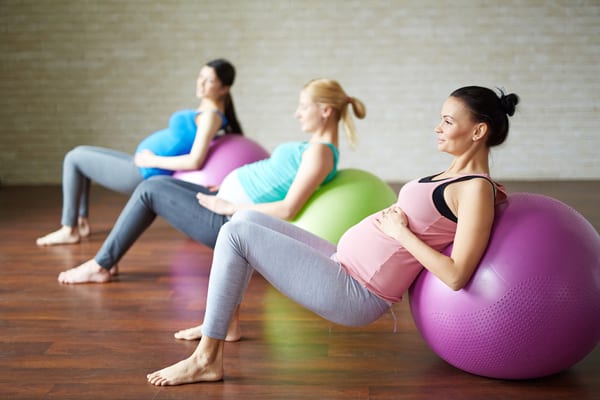Pregnant moms want to know, “Can I safely train my abs during pregnancy?” Well, according to the experts at the American Council on Exercise (ACE), the answer is a resounding, “Yes!” The fitness pros say that strong abdominals help in all three phases of pregnancy. First, they work like a support belt to help carry the weight of a growing baby and give the overworked back muscles a break. Second, keeping your abs in tip-top shape will also come in handy when it’s time to push the baby out during labor. Finally, well-built muscles repair at a quicker pace, so fit post-partum moms will find they recover faster.
While you are absolutely encouraged to keep those tummy muscles strong throughout your pregnancy, the trick is really working them in both a smart and safe way.
First Trimester. ACE experts say that moms-to-be should avoid oblique exercises throughout the entire perinatal period. The focus should instead be on strengthening the inner/transverse abdominals and work that works lengthwise (up and down) rather than across (side to side). Drawing up the pelvic floor, or Kegels, is a big part of this kind of work. If you are considering getting pregnant, it is also a good time to look for a qualified, certified Pilates Instructor who can help guide you through this kind of work.
Second Trimester. This is when you need to avoid the prone (lying on your stomach) or supine (lying flat on your back) positions as much as possible when working out, due to the increased blood volume and increased risk of circulatory issues. However, if you just modify these positions by elevating the head above the heart while supine, say, at a 30 degree angle, you can alleviate the risk factor. You can also do many ab exercises on stability balls, lying on your side or on all fours.
Third Trimester. The belly is bigger and the tendency during this period is for the back to sway and receive a lot of extra pressure, sometimes resulting in a lot of stress and strain. So this is when you really need to focus on posture, form, and alleviating that stress as much as possible by modifying standard exercises. Sitting on stability balls, padding the back with cushions and pillows while seated, and paying careful attention to proper postural positions while performing exercises are crucial now.
A Word of Caution. When focusing on your abs, be aware of not overdoing it. Diastasis Recti, or Abdominal Separation, is actually fairly common during pregnancy. Check yourself regularly, and make sure you tell your doctor if this happens to you. Proper rehab in the post-partum period will help to prevent the low-back pain, weak pelvic floor and incontinence that can accompany this problem.
—
Photo Credit: Pressmaster / Shutterstock.com
